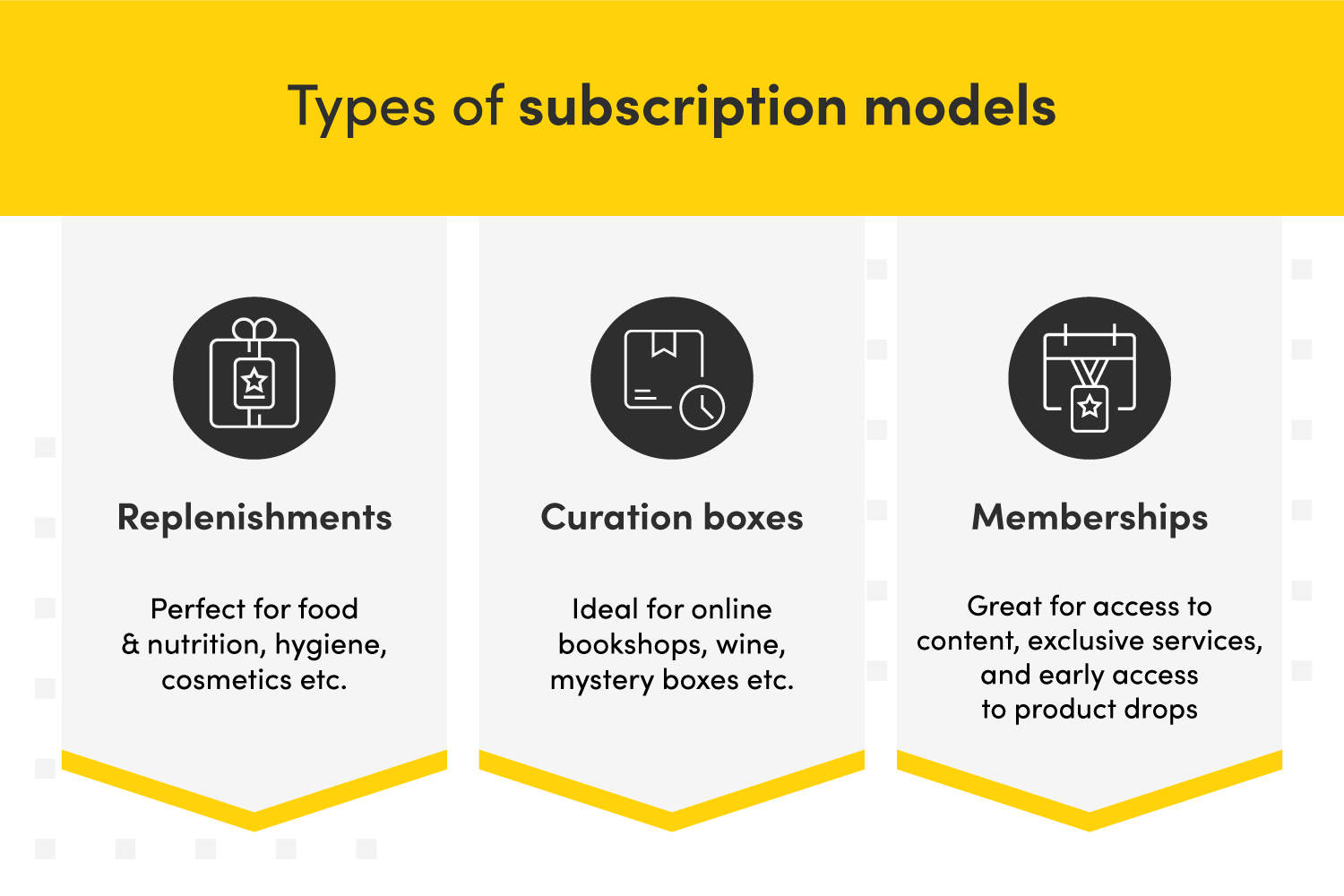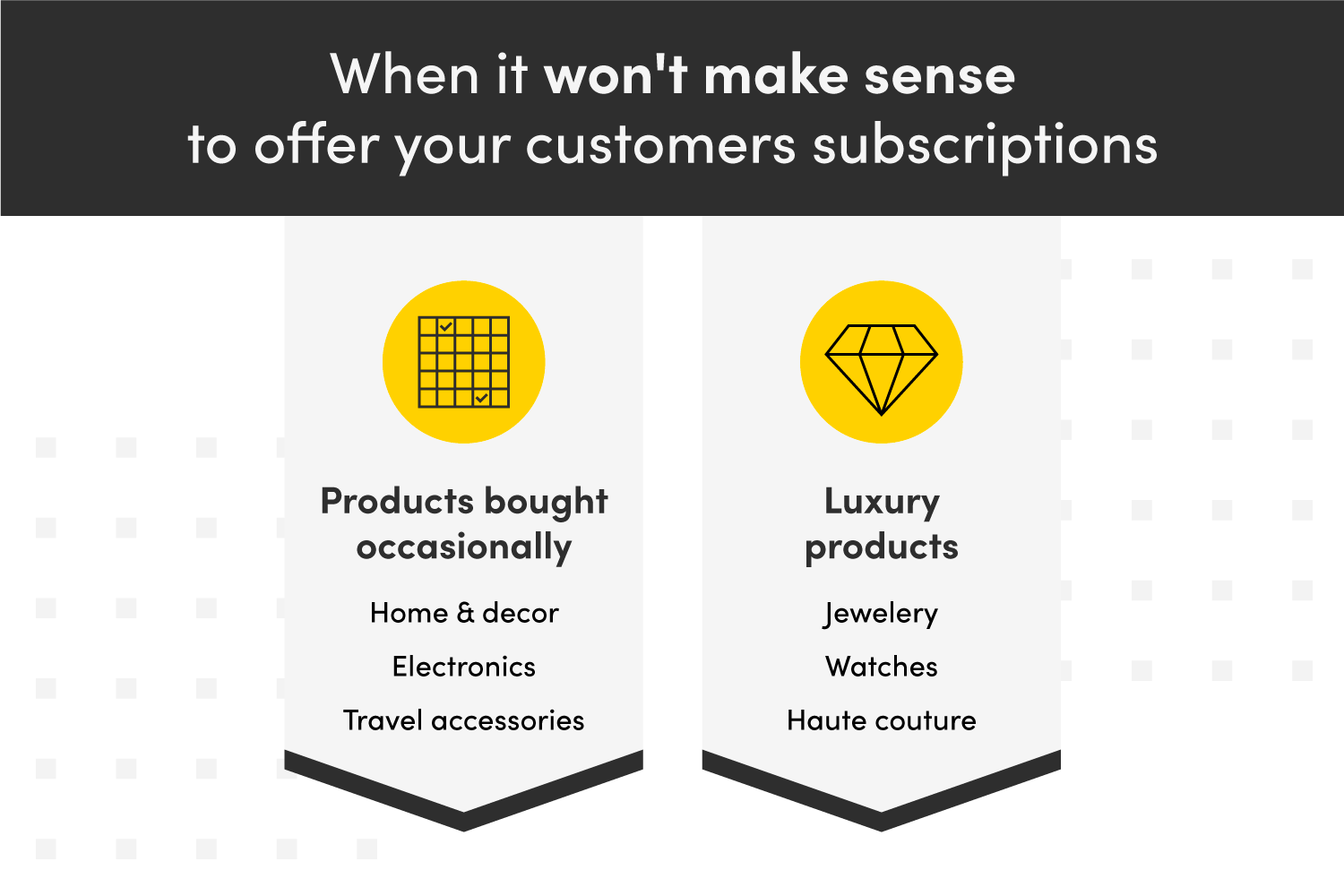During research for one of the projects, I came across a report on the DTC subscription market in the US recently. It shows that by the end of 2023, up to 75% of merchants in the US may have some form of subscription implemented. Is this figure really plausible? It makes you think about what kind of e-commerce product subscription will be appropriate.
To answer this question we have to understand that subscription in e-commerce is more than just ‘top-ups’ and we have several subscription business models. Let’s look at them one by one.

Replenishment
When you think of subscriptions in e-commerce you’ll have this model in mind most of the time. The formula is simple – we get replenishments of products that we use frequently at regular intervals. A good fit are everyday use products – hygiene (e.g. Dollar Shave Club providing shaving accessories, Lola offering intimate hygiene products), beauty products (Birchbox), food (Huel), nutrition supplements (Athletic greens), coffee (Hi! Coffedesk), drinks (Bumping Blends). This model has high conversion and retention rates (according to Shopify’s data – 45% of customers subscribe to these types of goods for at least one year), so it’s worth giving a try.
Curation boxes
This model presents significantly more challenges, however, when implemented successfully, it is very profitable – the average basket value is up to several times higher than for replenishment subscriptions.
The challenge coming with this model is undoubtedly the relatively high churn, which is usually due to boredom with the products or simply an unattractive offer. Companies offering a wide range of products are most likely to succeed by far. The choice overload may lead to an increase in abandoned shopping carts rate, so limiting the choice or providing some suggestions can be attractive to users. Examples? Online bookshops, wine, coffee, products related to children’s education, and products targeted for specific niches (e.g. gamers).
Memberships
The least obvious but easiest to implement are memberships/access subscriptions. Almost every e-commerce brand will be able to offer its customers some kind of privilege in return for a small recurring fee. Some obvious examples include Amazon Prime or Allegro Smart. An interesting idea is tested by Zalando – their Plus program offers customers faster delivery or a free one with no minimum basket value, premium support & stylist advice, and earlier access to certain products. I believe this approach can be particularly profitable for brands with loyal fans/community waiting for product drops or the launch of a new collection.
The same subscription model will also work well for e-commerces offering access to content, especially digital content (including newsletters or podcasts), but also services (e.g. subscription to veterinary consultations). An interesting variation of this subscription is NFT gated content – Shopify already allows merchants to offer certain products to customers with certain NFT tokens.
When a subscription won’t be the best idea
Products bought occasionally, once or a few times in a lifetime (home & decor – mirrors, furniture, bathroom taps, garden pools, travel accessories, electronics, wedding/holiday accessories, tires, bikes, etc) are a no-brainer. The second group is luxury products, like jewelry, watches, and haute couture fashion.
So will 75% of e-commerce businesses implement a subscription model in some form? To be quite honest I’m on the fence.
On the one hand – market segments like fashion, toys, hobbies and DIY, food, cosmetics, and hygiene products make up about 70% of the e-commerce market. In a digital world without cookies, brands will look for other ways to acquire and retain customers – subscriptions seem to be quite a sensible solution. It is worth taking an early interest in this topic.
On the other hand, I do not believe that this can happen as early as next year. Only the most innovative, agile, and growth-oriented brands will go down this road, and the rest will drag their feet waiting until the last minute when it will be much harder to win loyal customers. Make sure you are ahead of the pack in this race.

So will the subscription model dominate the e-commerce world?
To be quite honest I’m on the fence. On the one hand – market segments like fashion, toys, hobbies and DIY, food, cosmetics, and hygiene products make up about 70% of the e-commerce market. In a digital world without cookies, brands will look for other ways to acquire and retain customers – subscriptions seem to be quite a sensible solution. It is worth taking an early interest in this topic.
On the other hand, I do not believe that this can happen as early as the next few years. Only the most innovative, agile, and growth-oriented brands will go down this road, and the rest will drag their feet waiting until the last minute when it will be much harder to win loyal customers. Make sure you are ahead of the pack in this race. If you are running on Shopify it’s never been easier to give it a try with tools like Recharge Subscriptions.
PS. If you want some insights to get you started you might want to get familiar with mohi.to’s newest report on the subscription model in e-commerce.

